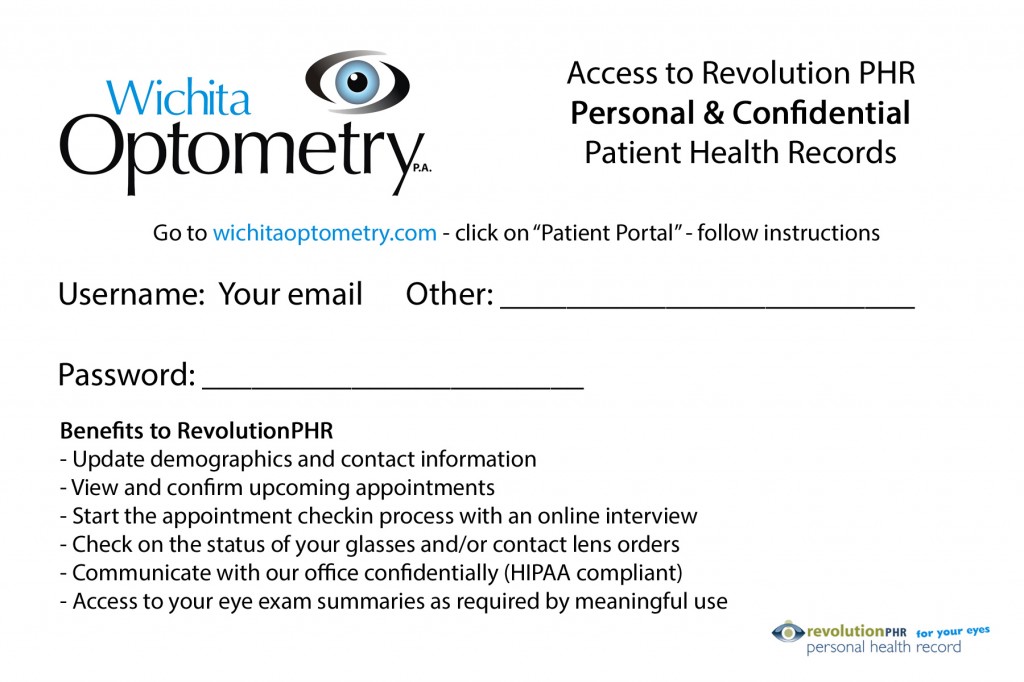You can lead your patients to the patient portal, and if you give them helpful tools and information, there is a greater chance that they will comply. Here are three ways you may find helpful in your optometry practice:
1. Create a handout with username & password – This is one way to put something in the hands of the patient. Your staff will write down their username and password on a pre-made tear-off piece of paper like the example below. The staff then takes two minutes to explain to the patient that they can see the results of their exam and track any optical orders through the online portal. Make sure your portal is a part of your practice website.
2. iPad upon arrival – Many patients may not take the time to login prior to their appointments. A couple of older-generation iPads can be used for this purpose when patients arrive. Extra styluses for electronic writing on the iPads can be purchased $12 for 20, and protective covers can be purchased through Amazon to ensure the iPads are not damaged. To make sure the iPad is only used for logging into the patient portal and not browsing the internet, go to the settings app and select “Guided Access.”
3. Health history – Many of the patient portals have some form of “interview” or “health history” that is available when the patient logs on. When the patient schedules an appointment, or is contacted at their one month prior confirmation call, they can be instructed on the importance of completing the online health history through the portal. Our office has found that when the doctors communicate to the staff how important the information is to them, the staff emphasize this to the patient. This leads to higher compliance.






